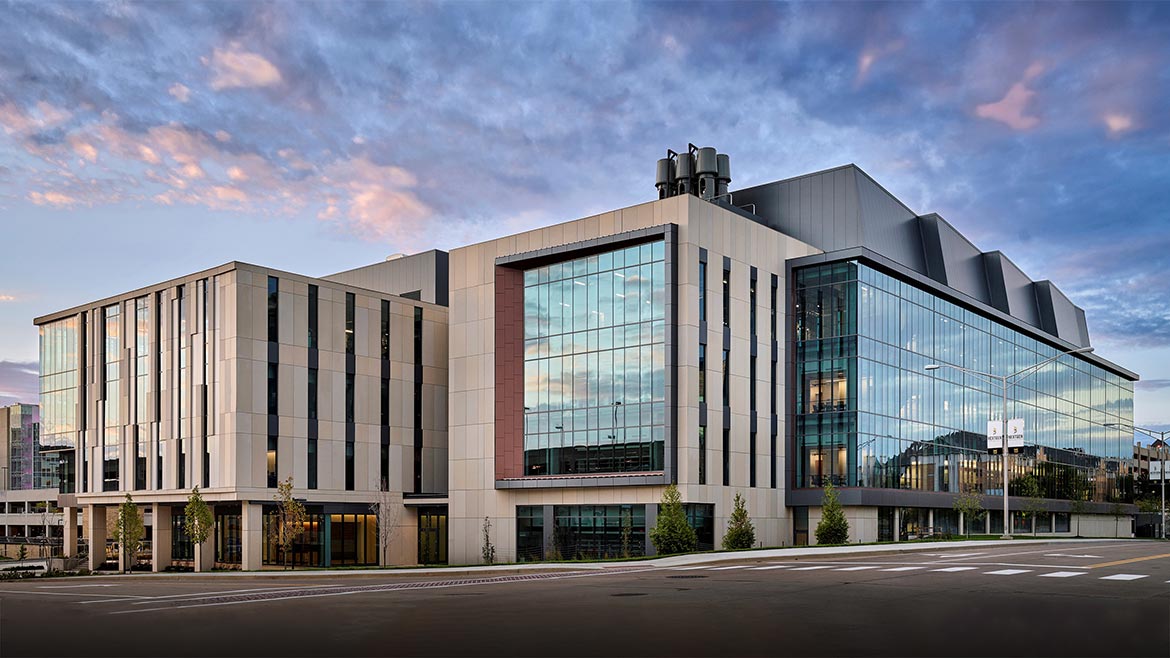Curtain walls are the shiny superheroes of modern architecture, swooping in to save our cities from boring brick facades! These glassy giants are like the fashionistas of buildings—always looking sleek and stylish while letting in tons of natural light.
But don’t be fooled! While they might look fabulous, they can turn your office into a sauna faster than you can say “energy efficiency.” And let’s not even talk about the poor window washers who have to dangle from ropes, battling gravity just to keep these beauties clean!
So, if you’re an architect dreaming of a glassy masterpiece, go ahead and add a curtain wall. Just remember: you’re not just building; you’re joining the glass box club, where every building looks like it’s trying to outshine its neighbor!
What is a Curtain Wall Facade System?
A curtain wall facade system is a non-structural exterior wall that hangs from the building’s structure, much like a curtain. It serves as an outer envelope, enclosing the space within while protecting it from environmental elements. Typically constructed from lightweight materials such as aluminum framing and glass, these systems are designed to transfer wind and gravity loads to the building’s primary structure without bearing any structural loads themselves.
Key Characteristics
- Lightweight and Thin: Curtain walls are designed to be lightweight, which allows for expansive glass surfaces that enhance the aesthetic appeal of buildings.
- Versatile Materials: Infill panels can be made from various materials, including glass, metal panels, stone, and fiberglass, providing design flexibility.
- Modern Aesthetic: They are closely associated with modernist architecture, characterized by clean lines and extensive use of glass.
Types of Curtain Wall Facade Systems
Curtain wall systems can be categorized based on their assembly methods and design strategies. Here are the primary types:
1. Stick Curtain Wall System
- Description: Assembled piece by piece on-site, this system consists of vertical and horizontal framing members (mullions and transoms) into which infill panels are installed.
- Advantages:
- Lower shipping costs.
- Flexibility for on-site adjustments.
- Disadvantages:
- Higher labor costs and time consumption.
- Requires scaffolding or cranes for installation at greater heights.
2. Unitized Curtain Wall System
- Description: Prefabricated in sections at the factory, these units are delivered to the construction site for quicker assembly.
- Advantages:
- Faster installation and higher quality control.
- Minimizes the need for extensive scaffolding.
- Disadvantages:
- Higher shipping costs due to the need for protective measures during transport.
3. Spider Glass Systems
- Description: Utilizes point-fixed glass panels connected to the structure with minimal framing, offering a transparent facade.
- Advantages:
- Aesthetic appeal with unobstructed views and natural light.
4. Double Skin or Double-Glazed Systems
- Description: Features two layers of glass with an insulating air gap.
- Advantages:
- Enhanced thermal insulation and noise reduction.
5. Structural Glazing
- Description: Involves bonding glass directly to the framework using structural silicone, eliminating visible framing.
- Advantages:
- Creates a sleek, modern appearance.
Functions of Curtain Wall Facade Systems
Curtain walls serve multiple essential functions that contribute to the overall performance of a building:
- Water Penetration Control: Designed to prevent water ingress through various drainage strategies, ensuring the longevity of the facade.
- Air Impermeability: Reduces air leakage, enhancing energy efficiency and maintaining indoor air quality.
- Resistance to Environmental Forces: Provides resistance against wind, thermal, and acoustic actions while accommodating thermal expansion and contraction.
- Solar Control: Selective coatings on glass can reduce solar heat gain, protecting interiors from UV damage and improving comfort levels.
Advantages of Curtain Wall Facade Systems
The adoption of curtain wall systems in modern architecture offers several benefits:
1. Aesthetic Flexibility
Curtain walls allow architects to create visually striking facades with large glass panels and various materials, enabling innovative design possibilities.
2. Energy Efficiency
By minimizing air and water infiltration, curtain wall systems contribute to lower energy consumption for heating and cooling, leading to significant cost savings over time.
3. Cost-Effectiveness
While the initial investment may be high, the long-term savings in energy efficiency and reduced maintenance costs make curtain walls a financially viable option for many projects.
4. Sustainability
Modern curtain wall systems can incorporate sustainable materials and technologies, aligning with green building standards and reducing environmental impact.
Curtain Wall Facade Systems in Bangladesh
Market Overview
The curtain wall facade system is gaining significant traction in Bangladesh, reflecting the country’s rapid urbanization and infrastructural development. The Bangladesh glass curtain wall market is projected to grow at a compound annual growth rate (CAGR) of around 10% from 2020 to 2026.
Demand Drivers
Several factors are contributing to the increasing demand for curtain wall systems in Bangladesh:
- Rapid Urbanization: The population growth in urban areas is driving the need for high-rise buildings and modern infrastructure.
- Surge in High-Rise Construction: With the rise of skyscrapers, the demand for aesthetically pleasing and functional facade systems has surged.
- Need for Energy-Efficient Designs: As energy costs rise, there is a growing emphasis on energy-efficient building designs.
- Modern Architectural Trends: The aesthetic appeal of curtain walls aligns with contemporary architectural styles.
Types of Curtain Wall Systems Used
- Stick Systems: Commonly used for smaller projects, these systems allow for flexibility in design and are suitable for various building types, including commercial and residential structures.
- Unitized Systems: These prefabricated systems are increasingly popular due to their quick installation times and reduced on-site labor requirements, making them ideal for large-scale projects.
- Structural Glazing: This method is gaining attention for its sleek appearance and minimal framing, favored in modern architectural designs.
Notable Projects
- Bashundhara City Shopping Complex: This landmark project in Dhaka incorporates a curtain wall facade to enhance its aesthetic appeal and functionality.
- High-Rise Office Buildings: Various office buildings in Dhaka are utilizing curtain wall systems to create modern, energy-efficient workplaces.
Challenges
While the curtain wall facade system offers numerous benefits, there are challenges to consider:
- Climate Considerations: Bangladesh’s tropical climate poses challenges, including humidity and heavy rainfall, necessitating effective water management systems to prevent moisture ingress.
- Cost Factors: The initial investment can be significant, but long-term energy savings and reduced maintenance costs often justify the expense.
Summary Table: Key Features of Curtain Wall Facade Systems
| Feature | Description |
| Material | Aluminum, glass, metal panels, stone, fiberglass |
| Types | Stick, unitized, spider glass, double-glazed, structural glazing |
| Functions | Water control, air impermeability, environmental resistance, solar control |
| Advantages | Aesthetic flexibility, energy efficiency, cost-effectiveness, sustainability |
| Challenges | Climate considerations, initial cost |
Future Trends
As technology advances, the development of more efficient and sustainable curtain wall systems will likely continue to shape the future of building facades. Innovations in materials and design techniques will further enhance the performance and aesthetic appeal of curtain walls, making them an even more attractive option for architects and builders alike.
In conclusion, the curtain wall facade system is not just a trend but a fundamental element of contemporary architecture, paving the way for innovative designs and sustainable building practices in Bangladesh and beyond.
Conclusion
The curtain wall facade system is integral to modern architectural design, combining functionality with aesthetic appeal. Its ability to provide weather resistance, energy efficiency, and design flexibility makes it a preferred choice for many high-rise buildings and contemporary structures.
As urbanization continues and the demand for innovative building designs grows, the adoption of curtain wall systems in Bangladesh is likely to expand. This trend not only reflects the country’s architectural evolution but also contributes to its economic development and sustainability goals.


Leave a Reply